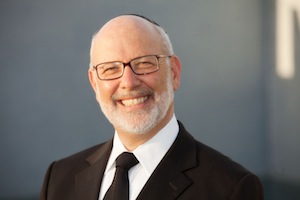Much has been said and written this year about the once-in-twenty-eight-year phenomenon of Birkat Hachamathis Wednesday. There are many dimensions to it: halachik, philosophic, kabbalistic and astronomical. Birkat Hachama is recited on the day that the sun, at sunset, is positioned against the same constellations on a Tuesday evening as it was on the Tuesday evening on which it was created 5770 years ago. This is one of the few occasions in our calendar governed by solar rather than lunar cycles (the other being the day we start to recite “vetein tal umattar” in chutz la’aretz).
Our Calendar is unique among the nations and cultures of the world. It is the only calendar that synchronizes both the solar and the lunar cycles in one integrated calendar system. The movement of the moon governs our months and our year. The cycle of the sun governs our Sabbath as it does our leap year and the positioning of our chaggim in their appropriate seasons.
Synchronizing lunar and solar cycles in an integrated calendar is about more than timing and seasons. The Sun and the Moon, the two primary celestial luminaries, each represent different modes of being. The Sun is ever constant and never changing. It looks the same each day. Even an astronomical amateur knows with a fair measure of precision where to expect the sun to rise each morning and where it will set. Its cycle moves a little each day to the north or the south, but this is not perceptible to the average person on a daily basis.
The moon on the other hand is ever changing and never constant. Every night it looks noticeably different. The average person doesn’t really know where it will rise and set each night.
The moon governs our months, known in Hebrew as Chodesh, which means new. The sun governs our year, Shannah in Hebrew, which means recycleor repetition. We need both disciplines: We need to build “grooves”, seder, for ourselves by constant repetition. These grooves create habits that guarantee at least some measure of consistent behavior and even achievement. Our davening is a daily “groove”. So are our Yamim Tovim and Shabbat. However if all we do is function in grooves, those grooves become ruts, and we become stale and stagnant. In addition to our seder, our grooves, we also need newness, vitality, experimentation, and exploration. We need chidush. The moon represents this chidush, this newness and innovation. The sun with its constancy, predictability and stability represents our seder. We need both. The moon wanes and grows; the sun is unvarying.
In Torah learning and thought a similar principle applies: Chidush(innovation) is core to Torah learning. “Bechol Yom yiheyu be’einecha kechadashim” (Each day the words of the Torah should be as if they are new). Yet all Torah innovation needs to be constructed within unchanging frameworks of mesorah (authentic methodology). The term mishnah comes from the same root as shanah.
In finance and economics we have similar principles. We need the ever-changing, volatile, unpredictable equity markets as much as we need more stable markets for more predictable instruments like government bonds. When innovation is not tempered with stability, we experience the kinds of seismic shake-up that our financial markets have been experiencing now. If we punish innovation and swing the pendulum to cling to safety and security, we deny ourselves the exhilaration of adventure and discovery. If we encourage unrestrained risk, we will destroy what our parents have built. If we stop investing in anything that is not secure we will leave nothing for our children. We need to develop the fine art of innovating without being reckless, of treading cautiously without shutting off the joys of human brilliance.
The Jew lives this exciting paradox of stability and volatility. Like Jacob’s ladder our feet are meant to be planted firmly on earth, while with our minds and our souls we explore, innovate and visit the highest reaches of spiritual achievement. We create behavioral grooves to guarantee our safety and we innovate to expand our experience.
On Wednesday, as we bless G-d for His creation and sustaining of the sun, we will marvel at the universe’s predictability. At the same time of the year we will emphasize the mitzvah of Hachodesh hazeh lachem (this New Moon is for you) and celebrate our capacities for individual and national renewal.








